Red Hogwarts: Academician without a diploma
September 11, 1903 in the family of Pavel Alimarin, a peasant who was settled in Moscow, was born a son, who was named Vanya.
Van Alimarin had no luck with education. No, he received his primary education at the Rogozhsky College.
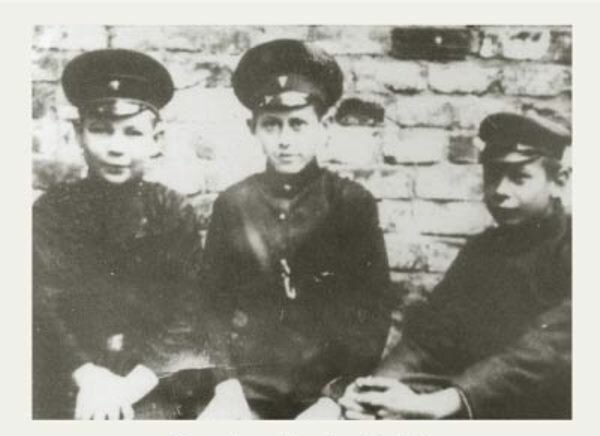
Vanya Alimarin (center) - student of the Rogozhsky school.
')
No, not in that Rogozhsky school, which is now the Moscow Old Believer Theological School, and that Rogozhsky school, which is now the Children's Music School named after N. And. Alekseeva. Yes, that Nikolai Alexandrovich Alekseev , who is the famous Moscow mayor, the founder and the first director of the school. Which then gave the directorship to his cousin, a well-known entrepreneur and industrialist Konstantin Sergeevich Alekseev , better known under the stage name “Stanislavsky”. Yes, the one that "I do not believe!".
But I digress. Let us return to Van, who graduated from the Rogozhskoe School.

After Vanya graduated from the Rogozhskoe School in 1915, the papal peasant, who was an accountant according to the documents, and in fact was actively involved in commerce, identified the heir to the Moscow Commerce School for merchandising.
But then a revolution happened, commerce broke out, and Vanya’s studies, too, actually. The building of the Commercial School was occupied by the first Soviet rabfak named after G. Plekhanov and the Industrial and Pedagogical (rate style!) Institute named after K. Liebknecht.
In general, everything became more or less settled only by the 20s, when the former school was reorganized into the 2nd Moscow Industrial and Economic Technical School named after G.V. Plekhanov, where Vanya and continued training.
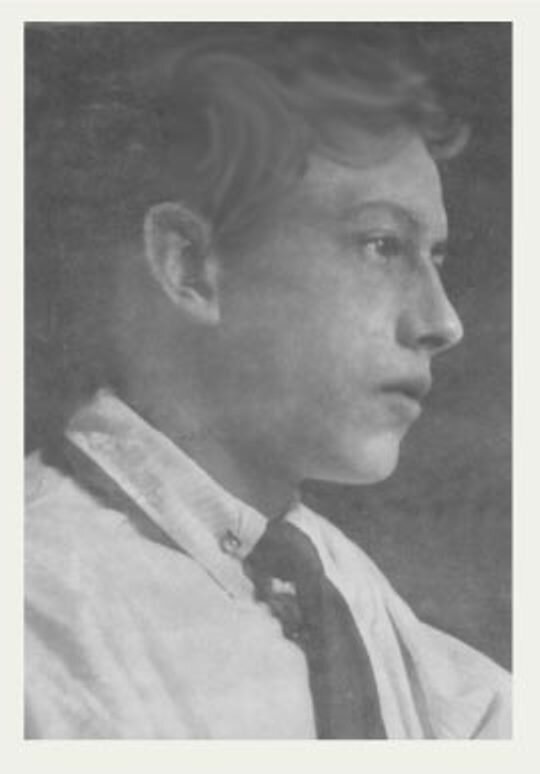
And here Vanya was lucky. In those hungry twenties, all scientists earned - not even money, but rations - wherever possible, therefore they usually taught in a good ten universities and not universities. So the Austrian German Konstantin Iosifovich Viscont came to Vanin Technical School as a teacher of chemistry.
He quickly turned his attention to the big-headed boy, and the under-trained commodity expert Vanya Alimarin was seriously interested in chemistry. Until the end of his days, he recalled his first teacher with the same warmth:
" I was lucky that the professor of chemistry was Professor Konstantin I. Viscont, a graduate of Moscow University. He was a geologist and petrographer and was very interested in physical chemistry. At that time, geologists were more concerned with purely geological issues. Viscont also sought to use chemistry and physical chemistry in this science. It was an innovation for that time. Konstantin Iosifovich drew me to the laboratory. I became his assistant, as a matter of fact, an assistant. Since then, I have been learning and learning my whole life. I think that it should be Cach life of a scientist. "

K.I. Viscont
After Alimarin graduated from a technical school in 1923 (having studied there for a total of 8 years), Viscont took him to work at the All-Union Institute of Mineral Raw Materials (SIMS).
The one where Viscont himself was in charge of the petrochemical laboratory, and which was created on the basis of the only private research institute Litogeya in the Russian Empire. Yes, yes, the same one that the pope, the millionaire merchant Vasily Arshinov , presented to another student of Viscont, Vladimir Arshinov, at the end of the university. I, however, already wrote about this , I will not be distracted.
Alimarin worked hard at VIMS as a junior researcher and no one paid any attention to his lack of higher education.

In those post-revolutionary years, it was easier with this, then the students who failed to study and commanded scientific expeditions, and in the best universities of the country they taught - the same Nikolay Sergeevich Shatsky , about whom I will tell you some day.
One way or another, but after three years of working as a man at VIMS, Ivan Alimarin decided to get a higher education. Where - no questions. SIMS Director Nikolai Fyodorovsky was one of the founders of the Moscow Mining Academy , which I call the Red Hogwarts. In the same place, in MGA, Viskont and Arshinov taught, and almost half of the employees of SIMS.
Since 1926, Ivan Alimarin studied at the Moscow Mining Academy at the geological exploration faculty in the specialty "mineralogy". He studied there, without stopping working in VIMS, for two years - until 1928.
And then he was unlucky again.
The bodies of the GPU in the Donbass exposed the " sabotage organization of workers in the mining and coal industry associated with foreign anti-Soviet centers ." It was the famous “Shakhty case”, which marked a turn from the liberties of the NEP to the “crackdown”. The case in which hundreds of people were arrested, 53 went to court, 11 were sentenced to death and five were shot.

The defendants in the case of Shakhty escort officers OGPU (1928)
The public outcry was tremendous and one of the consequences of the “Shakhty case” was a powerful campaign of “proletarianization” of technical universities. The very first poet of the Republic, the great Vladimir Mayakovsky, called on the pages of the magazine "Red Students":
Will not give
bourgeois sons
across Donbass
counter vivit
Through college
from the plow,
from the machine
brainy
spice
stand out!
It must be said that in the Moscow Mining Academy, despite its utmost revolutionism, the students' origins have always been condescending. So, as early as May 27, 1920, the Presidium of the MGA petitioned for the release of a student, Obolensky , who was taken to the Moscow concentration camp as a hostage.
And later, in October 1926, it was possible to cancel the exclusion of student A. Kryukov. " for hiding social origin ". The board of the Academy took into account that "the crime was committed at the age of 18 and not for mercenary purposes ." When deciding, they also took into account the fact that permission to continue education was given by the working organization of the mine and that " during his studies, Kryukov did not compromise himself ."
But all this was before the “Shakhty case”. Now, even the all-powerful rector I.M. Gubkin , who, speaking at a ceremonial meeting dedicated to the 10th anniversary of the Moscow Civil Aviation University, said: “ ... our main task was to provide the Academy with a suitable student body, to maintain a strictly class line in this regard. Here our goal can be briefly formulated in this way - to ensure the complete proletarianization of our university . ”
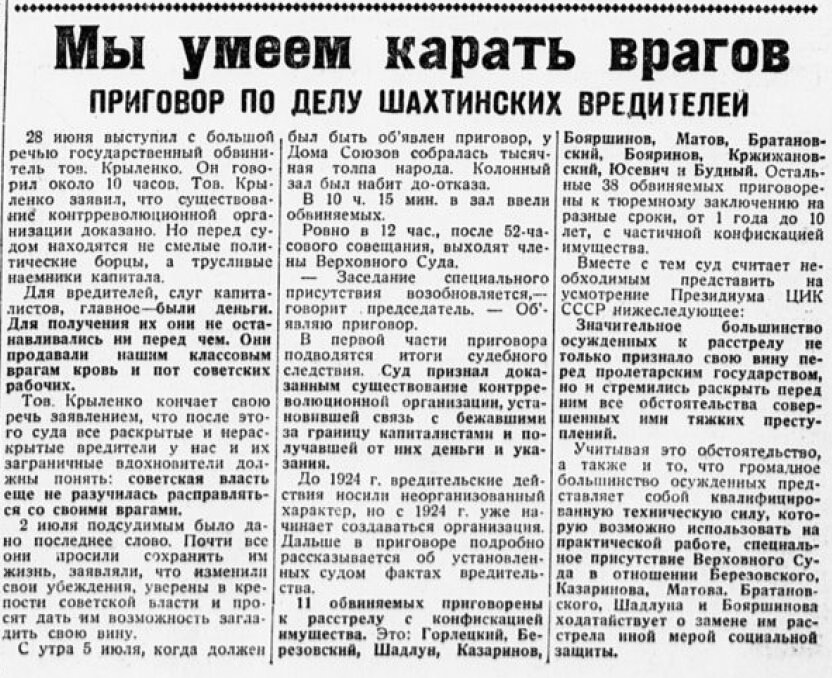
And heads flew.
Exempted student E.N. Lessing , as the son of " special ", shot by the Soviet authorities.
Exempted student D.N. Gabrielyan , as the son of a merchant, “a former white man ”, hid this circumstance when entering the MGA.
The student Delvig , the son of the “ former baron ”, is dismissed as “ hiding his social origin ”
Dismissed student V.N. Obolensky , as the son of the shot " for the counter-revolution ." However, here the names are enough.
A student M. Kalmenev was dismissed for not breaking his ties with his father, who was “ subjected to isolation for the counter-revolution and confiscated property ” ...
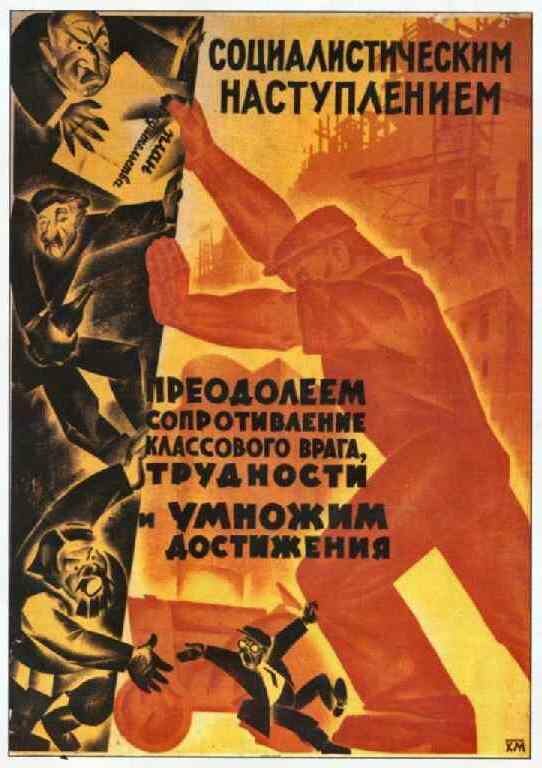
" For non-proletarian origin " in 1928 from the Moscow Mining Academy was a student Ivan Pavlovich Alimarin was expelled. Daddy backfired business vein.
Fortunately for him, the “purge” took place only in universities, and did not touch the scientific research institute, so they were not fired from VIMS. He did not lose heart - all his life, Ivan Alimarin remained an optimist, a kind and smiling man.

In the same year of 1928, as if to mark the end of an unsuccessful attempt to get a higher education, the young scientist published a second scientific work - jointly with K.I. Viskont article on their method of determining water in micas - minerals, widely used in the electrical industry.
Alimarin never got a higher education.
The issue of lack of a diploma was solved simply - in 1935, when scientific degrees were introduced in the Soviet Union, Ivan Pavlovich Alimarin was immediately awarded the degree of Candidate of Chemical Sciences without defending a thesis: by that time it was impossible to ignore his contribution to analytical chemistry.
In 1950 he defended his doctoral thesis, in 1953 he became a Corresponding Member, since 1966 he has been a full member of the Academy of Sciences of the USSR, and for many years he has been recognized as the head of analytical chemistry in the Soviet Union.

And it was one of three Soviet academicians known to me who did not have a diploma of higher education - along with Jacob Zeldovich and Israel Gelfand .
Alimarin had many awards - he was awarded the title Hero of Socialist Labor, he was awarded four Orders of Lenin, Orders of the October Revolution, the Red Star, the Red Banner of Labor and six medals. In 1972, the academician was awarded the State Prize of the USSR.
No less was international recognition: honorary member of the Academy of Sciences of Finland, a member of the Royal Society of Chemistry (Great Britain), Honorary Doctor of the Budapest Technical University, University of Gothenburg, University of Birmingham (United Kingdom). He was awarded medals and prizes of scientific organizations and societies in Finland, Hungary, Austria, Czechoslovakia, Japan, international organizations ...
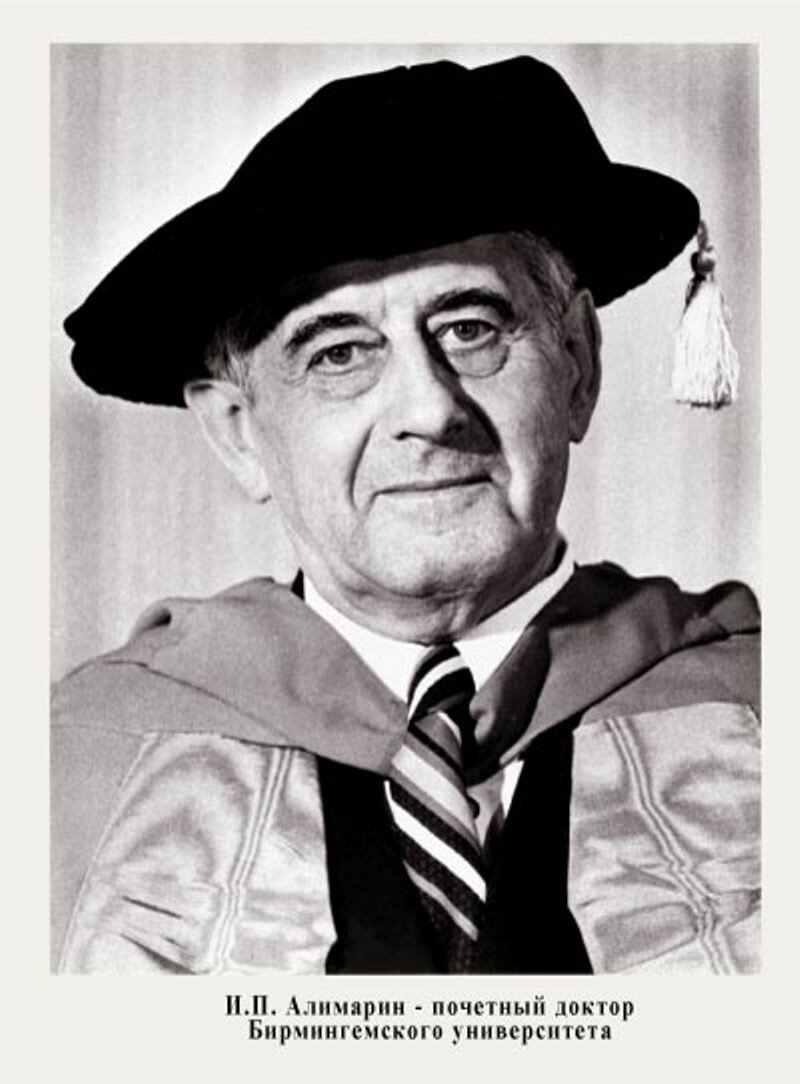
But modest Constantin Viscont did not get even the shadow of recognition of his famous students - neither orders nor medals. His only reward was the title “Honored Worker of Science and Technology of the RSFSR” awarded in 1941.
But he was a real teacher - able to find and cut diamonds.
And this is sometimes more important.
(most of the photos taken from the site " Russian Chemical Analytical Portal ")
Van Alimarin had no luck with education. No, he received his primary education at the Rogozhsky College.

Vanya Alimarin (center) - student of the Rogozhsky school.
')
No, not in that Rogozhsky school, which is now the Moscow Old Believer Theological School, and that Rogozhsky school, which is now the Children's Music School named after N. And. Alekseeva. Yes, that Nikolai Alexandrovich Alekseev , who is the famous Moscow mayor, the founder and the first director of the school. Which then gave the directorship to his cousin, a well-known entrepreneur and industrialist Konstantin Sergeevich Alekseev , better known under the stage name “Stanislavsky”. Yes, the one that "I do not believe!".
But I digress. Let us return to Van, who graduated from the Rogozhskoe School.

After Vanya graduated from the Rogozhskoe School in 1915, the papal peasant, who was an accountant according to the documents, and in fact was actively involved in commerce, identified the heir to the Moscow Commerce School for merchandising.
But then a revolution happened, commerce broke out, and Vanya’s studies, too, actually. The building of the Commercial School was occupied by the first Soviet rabfak named after G. Plekhanov and the Industrial and Pedagogical (rate style!) Institute named after K. Liebknecht.
In general, everything became more or less settled only by the 20s, when the former school was reorganized into the 2nd Moscow Industrial and Economic Technical School named after G.V. Plekhanov, where Vanya and continued training.

And here Vanya was lucky. In those hungry twenties, all scientists earned - not even money, but rations - wherever possible, therefore they usually taught in a good ten universities and not universities. So the Austrian German Konstantin Iosifovich Viscont came to Vanin Technical School as a teacher of chemistry.
He quickly turned his attention to the big-headed boy, and the under-trained commodity expert Vanya Alimarin was seriously interested in chemistry. Until the end of his days, he recalled his first teacher with the same warmth:
" I was lucky that the professor of chemistry was Professor Konstantin I. Viscont, a graduate of Moscow University. He was a geologist and petrographer and was very interested in physical chemistry. At that time, geologists were more concerned with purely geological issues. Viscont also sought to use chemistry and physical chemistry in this science. It was an innovation for that time. Konstantin Iosifovich drew me to the laboratory. I became his assistant, as a matter of fact, an assistant. Since then, I have been learning and learning my whole life. I think that it should be Cach life of a scientist. "

K.I. Viscont
After Alimarin graduated from a technical school in 1923 (having studied there for a total of 8 years), Viscont took him to work at the All-Union Institute of Mineral Raw Materials (SIMS).
The one where Viscont himself was in charge of the petrochemical laboratory, and which was created on the basis of the only private research institute Litogeya in the Russian Empire. Yes, yes, the same one that the pope, the millionaire merchant Vasily Arshinov , presented to another student of Viscont, Vladimir Arshinov, at the end of the university. I, however, already wrote about this , I will not be distracted.
Alimarin worked hard at VIMS as a junior researcher and no one paid any attention to his lack of higher education.

In those post-revolutionary years, it was easier with this, then the students who failed to study and commanded scientific expeditions, and in the best universities of the country they taught - the same Nikolay Sergeevich Shatsky , about whom I will tell you some day.
One way or another, but after three years of working as a man at VIMS, Ivan Alimarin decided to get a higher education. Where - no questions. SIMS Director Nikolai Fyodorovsky was one of the founders of the Moscow Mining Academy , which I call the Red Hogwarts. In the same place, in MGA, Viskont and Arshinov taught, and almost half of the employees of SIMS.
Since 1926, Ivan Alimarin studied at the Moscow Mining Academy at the geological exploration faculty in the specialty "mineralogy". He studied there, without stopping working in VIMS, for two years - until 1928.
And then he was unlucky again.
The bodies of the GPU in the Donbass exposed the " sabotage organization of workers in the mining and coal industry associated with foreign anti-Soviet centers ." It was the famous “Shakhty case”, which marked a turn from the liberties of the NEP to the “crackdown”. The case in which hundreds of people were arrested, 53 went to court, 11 were sentenced to death and five were shot.

The defendants in the case of Shakhty escort officers OGPU (1928)
The public outcry was tremendous and one of the consequences of the “Shakhty case” was a powerful campaign of “proletarianization” of technical universities. The very first poet of the Republic, the great Vladimir Mayakovsky, called on the pages of the magazine "Red Students":
Will not give
bourgeois sons
across Donbass
counter vivit
Through college
from the plow,
from the machine
brainy
spice
stand out!
It must be said that in the Moscow Mining Academy, despite its utmost revolutionism, the students' origins have always been condescending. So, as early as May 27, 1920, the Presidium of the MGA petitioned for the release of a student, Obolensky , who was taken to the Moscow concentration camp as a hostage.
And later, in October 1926, it was possible to cancel the exclusion of student A. Kryukov. " for hiding social origin ". The board of the Academy took into account that "the crime was committed at the age of 18 and not for mercenary purposes ." When deciding, they also took into account the fact that permission to continue education was given by the working organization of the mine and that " during his studies, Kryukov did not compromise himself ."
But all this was before the “Shakhty case”. Now, even the all-powerful rector I.M. Gubkin , who, speaking at a ceremonial meeting dedicated to the 10th anniversary of the Moscow Civil Aviation University, said: “ ... our main task was to provide the Academy with a suitable student body, to maintain a strictly class line in this regard. Here our goal can be briefly formulated in this way - to ensure the complete proletarianization of our university . ”

And heads flew.
Exempted student E.N. Lessing , as the son of " special ", shot by the Soviet authorities.
Exempted student D.N. Gabrielyan , as the son of a merchant, “a former white man ”, hid this circumstance when entering the MGA.
The student Delvig , the son of the “ former baron ”, is dismissed as “ hiding his social origin ”
Dismissed student V.N. Obolensky , as the son of the shot " for the counter-revolution ." However, here the names are enough.
A student M. Kalmenev was dismissed for not breaking his ties with his father, who was “ subjected to isolation for the counter-revolution and confiscated property ” ...

" For non-proletarian origin " in 1928 from the Moscow Mining Academy was a student Ivan Pavlovich Alimarin was expelled. Daddy backfired business vein.
Fortunately for him, the “purge” took place only in universities, and did not touch the scientific research institute, so they were not fired from VIMS. He did not lose heart - all his life, Ivan Alimarin remained an optimist, a kind and smiling man.

In the same year of 1928, as if to mark the end of an unsuccessful attempt to get a higher education, the young scientist published a second scientific work - jointly with K.I. Viskont article on their method of determining water in micas - minerals, widely used in the electrical industry.
Alimarin never got a higher education.
The issue of lack of a diploma was solved simply - in 1935, when scientific degrees were introduced in the Soviet Union, Ivan Pavlovich Alimarin was immediately awarded the degree of Candidate of Chemical Sciences without defending a thesis: by that time it was impossible to ignore his contribution to analytical chemistry.
In 1950 he defended his doctoral thesis, in 1953 he became a Corresponding Member, since 1966 he has been a full member of the Academy of Sciences of the USSR, and for many years he has been recognized as the head of analytical chemistry in the Soviet Union.

And it was one of three Soviet academicians known to me who did not have a diploma of higher education - along with Jacob Zeldovich and Israel Gelfand .
Alimarin had many awards - he was awarded the title Hero of Socialist Labor, he was awarded four Orders of Lenin, Orders of the October Revolution, the Red Star, the Red Banner of Labor and six medals. In 1972, the academician was awarded the State Prize of the USSR.
No less was international recognition: honorary member of the Academy of Sciences of Finland, a member of the Royal Society of Chemistry (Great Britain), Honorary Doctor of the Budapest Technical University, University of Gothenburg, University of Birmingham (United Kingdom). He was awarded medals and prizes of scientific organizations and societies in Finland, Hungary, Austria, Czechoslovakia, Japan, international organizations ...

But modest Constantin Viscont did not get even the shadow of recognition of his famous students - neither orders nor medals. His only reward was the title “Honored Worker of Science and Technology of the RSFSR” awarded in 1941.
But he was a real teacher - able to find and cut diamonds.
And this is sometimes more important.
(most of the photos taken from the site " Russian Chemical Analytical Portal ")
Source: https://habr.com/ru/post/447698/
All Articles